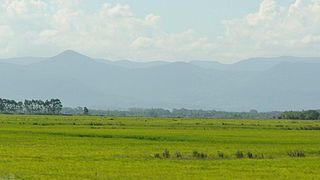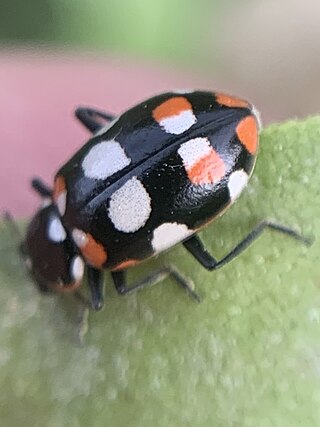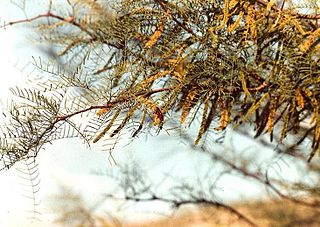
The Environment of Argentina is characterised by high biodiversity.

The Environment of Argentina is characterised by high biodiversity.
Subtropical plants dominate the Gran Chaco in the north, with the Dalbergia genus of trees well represented by Brazilian rosewood and the quebracho tree; also predominant are the wacho white and black algarrobo trees ( Prosopis alba and Prosopis nigra ). Savannah-like areas exist in the drier regions nearer the Andes. Aquatic plants thrive in the wetlands of Argentina. In central Argentina the humid pampas are a true tallgrass prairie ecosystem. [1]
The original pampa had virtually no trees; some imported species like the American sycamore or eucalyptus are present along roads or in towns and country estates (estancias). The only tree-like plant native to the pampa is the evergreen Ombú. The surface soils of the pampa are a deep black color, primarily mollisols, known commonly as humus. This makes the region one of the most agriculturally productive on Earth; however, this is also responsible for decimating much of the original ecosystem, to make way for commercial agriculture. The western pampas receive less rainfall, this dry pampa is a plain of short grasses or steppe. [1]
Most of Patagonia lies within the rain shadow of the Andes, so the flora, shrubby bushes and plants, is suited to dry conditions. The soil is hard and rocky, making large-scale farming impossible except along river valleys. Coniferous forests in far western Patagonia and on the island of Tierra del Fuego, include alerce, ciprés de la cordillera, ciprés de las guaitecas, huililahuán, lleuque, mañío hembra and pehuén, while broadleaf trees include several species of Nothofagus such as coihue, lenga and ñire. Other introduced trees present in forestry plantations include spruce, cypress and pine. Common plants are the copihue and colihue. [2]
In Cuyo, semiarid thorny bushes and other xerophile plants abound. Along the many rivers grasses and trees grow in significant numbers. The area presents optimal conditions for the large scale growth of grape vines. In northwest Argentina there are many species of cactus. No vegetation grows in the highest elevations (above 4,000 m (13,000 ft)) because of the extreme altitude.
Many species live in the subtropical north. Prominent animals include big cats like the jaguar and puma; primates (howler monkey); large reptiles (crocodiles), the Argentine black and white tegu and a species of caiman. Other animals include the tapir, peccary, capybara, bush dog, and various species of turtle and tortoise. There are a wide variety of birds, notably hummingbirds, flamingos, toucans, and swallows.
The central grasslands are populated by the giant anteater, armadillo, pampas cat, maned wolf, mara, cavias, and the rhea (ñandú), a large flightless bird. Hawks, falcons, herons, and tinamous (perdiz, Argentine "false partridges") inhabit the region. There are also pampas deer and pampas foxes. Some of these species extend into Patagonia.
The western mountains are home to animals including the llama, guanaco and vicuña which are among the most recognizable species of South America. Also in this region are the fox, viscacha, Andean mountain cat, kodkod, and the largest flying bird in the New World, the Andean condor.
Southern Argentina is home to the cougar, huemul, pudú (the world's smallest deer), and introduced, non-native wild boar. [2] The coast of Patagonia is rich in animal life: elephant seals, fur seals, sea lions and species of penguin. The far south is populated by cormorants.
The territorial waters of Argentina have abundant ocean life; mammals such as dolphins, orcas, and whales like the southern right whale, a major tourist draw for naturalists. Sea fish include sardines, Argentine hakes, dolphinfish, salmon, and sharks; also present are squid and king crab (centolla) in Tierra del Fuego. Rivers and streams in Argentina have many species of trout and the South American golden dorado fish. Well known snake species inhabiting Argentina include boa constrictors and a very venomous pit viper named the yarará. The hornero was elected the national bird after a survey in 1928. [3]
Insects, like Eriopis connexa are found throughout the country. [4]
| | This section needs expansion. You can help by adding to it. (November 2020) |
The largest oil spill in fresh water was caused by a Shell Petroleum tanker in the Río de la Plata, off Magdalena, on January 15, 1999, polluting the environment, drinking water, and local wildlife. [5]
Argentina had a 2018 Forest Landscape Integrity Index mean score of 7.21/10, ranking it 47th globally out of 172 countries. [6]

A savanna or savannah is a mixed woodland-grassland ecosystem characterised by the trees being sufficiently widely spaced so that the canopy does not close. The open canopy allows sufficient light to reach the ground to support an unbroken herbaceous layer consisting primarily of grasses. According to Britannica, there exists four savanna forms; savanna woodland where trees and shrubs form a light canopy, tree savanna with scattered trees and shrubs, shrub savanna with distributed shrubs, and grass savanna where trees and shrubs are mostly nonexistent.
Cypress is a common name for various coniferous trees or shrubs of northern temperate regions that belong to the family Cupressaceae. The word cypress is derived from Old French cipres, which was imported from Latin cypressus, the latinisation of the Greek κυπάρισσος (kyparissos). Cypress trees are a large classification of conifers, encompassing the trees and shrubs from the cypress family (Cupressaceae) and many others with the word cypress in their common name. Many cypress trees have needle-like, evergreen foliage and acorn-like seed cones.

The Pampas are fertile South American low grasslands that cover more than 1,200,000 square kilometres (460,000 sq mi) and include the Argentine provinces of Buenos Aires, La Pampa, Santa Fe, Entre Ríos, and Córdoba; all of Uruguay; and Brazil's southernmost state, Rio Grande do Sul. The vast plains are a natural region, interrupted only by the low Ventana and Tandil hills, near Bahía Blanca and Tandil (Argentina), with a height of 1,300 m (4,265 ft) and 500 m (1,640 ft), respectively.

The culpeo, also known as culpeo zorro, Andean zorro, Andean fox, Paramo wolf, Andean wolf, and colpeo fox, is a species of South American fox. Regardless of the name, it is not a true fox, but more closely related to wolves and jackals. Its appearance resembles that of foxes due to convergent evolution.

The Magellanic subpolar forests are a terrestrial ecoregion of southernmost South America, covering parts of southern Chile and Argentina, and are part of the Neotropical realm. It is a temperate broadleaf and mixed forests ecoregion, and contains the world's southernmost forests.

The ashy-headed goose is a species of waterfowl in tribe Tadornini of subfamily Anserinae. It is found in Argentina and Chile.

The Sierras de Córdoba is a mountain range in central Argentina, located between the Pampas to the east and south and the Chaco to the north and east. Most of the range is located in Córdoba Province, except for the southwestern margin which is in San Luis Province.

The Semi-arid Pampas, also known as the Dry Pampas, is a temperate grassland ecoregion of central Argentina.

The Patagonian mara is a relatively large rodent in the mara genus Dolichotis. It is also known as the Patagonian cavy or Patagonian hare. This herbivorous, somewhat rabbit-like animal is found in open and semiopen habitats in Argentina, including large parts of Patagonia. A population has also been recorded in the northern United Arab Emirates, possibly as a result of escaped pets or captive animals. It is monogamous, but often breeds in warrens shared by several pairs.

The Reserva Provincial La Payunia also known as Payún or Payén is a natural reserve located in the Malargüe Department in the southern part of Mendoza Province, Argentina, about 160 km away from Malargüe city. It was declared as nature preserve in 1988 and has an area of 4,500 km2. La Payunia is home to the many volcanic cones, being noteworthy the Payún Matrú volcano.

The rufous-tailed hawk is a species of bird of prey in the family Accipitridae.

The chimango caracara is a species of bird of prey in the family Falconidae, the falcons and caracaras. It is found in Argentina, Bolivia, Brazil, Chile, Paraguay, and Uruguay, and as a vagrant on the Falkland Islands.

The native flora of Chile is characterized by a higher degree of endemism and relatively fewer species compared to the flora of other countries of South America. A classification of this flora necessitates its division into at least three general zones: the desert provinces of the north, Central Chile, and the humid regions of the south.

Peru has some of the greatest biodiversity in the world. It belongs to the select group of mega diverse countries because of the presence of the Andes, Amazon rainforest, and the Pacific Ocean. It has the fourth-most tropical forests of any country and the ninth-most forest area. The country is ranked among the five countries with the greatest biodiversity in the world according to various studies.

Tierra del Fuego National Park is a national park on the Argentine part of the island of Tierra del Fuego, within Tierra del Fuego Province in the ecoregion of Patagonic Forest and Altos Andes, a part of the subantarctic forest. Established on 15 October 1960 under the Law 15.554 and expanded in 1966, it was the first shoreline national park to be established in Argentina.

Eriopis connexa is a species of ladybird beetle that is native to South America. Both males and females mate multiple times with different individuals of the opposite sex, like most members of the family Coccinellidae. This promiscuous behavior leads to unique reproductive adaptations, such as sperm mixing. In order to boost offspring nutrition and reduce sibling cannibalism, females lay unfertilized eggs for their offspring to consume upon hatching. This predatory beetle species feeds primarily on aphids and is widespread throughout many agroecosystems, such as cotton, maize, sorghum, soybean, and wheat. Due to aphids being extremely damaging agricultural pests, Eriopis connexa has been introduced to the United States for biological pest management. Recent studies on pyrethroid insecticide resistance in Eriopis connexa have led to research by applied entomologists on the species' potential role in integrated pest management schemes in crop fields that rely on lambda-cyhalothrin (LCT), a common pyrethroid insecticide that is ineffective against aphid population control. The potential efficacy and success of the utilization of Eriopis connexa in these programs is widely debated and is the focus of much recent research due to the lack of understanding regarding the effects of pyrethroid resistance on the behavior of this species.

Prosopis chilensis is a species of tree in the genus Prosopis, belonging to the family Fabaceae. It is found in parts of central Chile, southern Peru, Bolivia, and Andean (northwestern) Argentina. Its common names include Chilean mesquite, cupesí, and Chilean algarrobo. It is used for providing shade, for animal feed and for firewood.

The Espinal (NT0801) is an ecoregion of dry, thorny forest, savanna and steppe in Argentina. It has been extensively modified by large scale cattle ranching, but remnants of the original flora remain. It is threatened by the advance of the irrigation-based agricultural frontier.
The paleoethnobotany of the Mapuche focuses on archaeological evidence supporting plant use by past and present Mapuche populations collected from multiple sites in southern Chile and the Patagonia region of Argentina. Paleoethnobotany is the study of fossil and material remains from plants, mostly seeds and residues that can be analyzed from material remains. Data can be collected from archaeological sites with a particular interest in learning about the history of agriculture in a region or the use of plants for either subsistence or medicinal use. The Mapuche are an indigenous culture native to South America. The archaeological record has revealed that the Mapuche were present in modern-day south-central Chile and southwestern Argentina from at least 500-600 BC. It is also noteworthy, that while collectively the Mapuche use this endonym, there are often subsets of the culture that have more specific names based on geographic location as well as different ecological niches.

The North American beaver is an invasive species in Tierra del Fuego, at the southern end of Patagonia. Tierra del Fuego is a large island encompassing parts of Chile and Argentina, so that policies and actions to control the species have mainly been binational. The beavers were introduced to the area in 1946 in an effort by the Argentine government to establish a fur trade in the region. Since then, the beavers have spread throughout most of Tierra del Fuego and have also been seen on the Brunswick Peninsula of mainland Chile. When the fur trade failed to establish, the beavers became problematic and the two governments agreed to intervene to eradicate them.